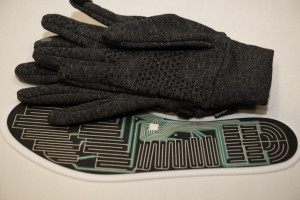
As IFAI’s market research manager, Jeffrey C. Rasmussen has been a closer observer of textiles markets. His presentation opened the one-day Smart Fabrics Summit held April 11 in Washington D.C. This article summarizes key points from his presentation.
The growth of smart fabrics technologies and applications is no longer a curiosity; it is the new reality of high-tech fabrics and it’s gaining ground at an impressive pace. The size of the smart fabrics market was $1.9 billion worldwide in 2015; it also realized an 18 percent growth rate, which it has achieved each year since 2012. One has to be impressed with the potential apparent in this high tech end of the advanced textiles market.
Four market segments share most of the “pie,” with transportation leading at 27 percent. Military/government is close behind with 21 percent; industrial and commercial applications claims 20 percent; sports and fitness has a 17 percent share. The reason transportation leads is largely due to the growth of inflatable seatbelts and heated seats in vehicles of all kinds.
The U.S. market size is growing at an even faster pace at 27 percent since 2012; the 2016 market size is estimated to be just over $1 billion.
A definition
Because smart fabric technology is advancing so fast, a definitive explanation is at risk of being outdated as fast as it appears in an article. However, in terms of available, commercialized products, this definition is appropriate.
Smart fabrics are part of an interactive textile system that may include wearable products incorporating electronics, or smart materials that sense and react to environmental stimuli and then alter their state and functionality. Smart fabrics can be passive, incorporating sensors that respond to environmental conditions, or they may be active with sensors that react to stimuli.
Market details
In addition to the top four markets incorporating smart fabric technologies, there are two more that have made significant investments and contributions – and they couldn’t be more different: fashion and medical/healthcare. Products in fashion often incorporate lighted fabrics, but shipments of smart glasses are estimated to reach 10 million by 2016 – and 1 billion between 2019-2023.
Medical applications, especially the home monitoring market is also a budding segment, showing 7 percent of the 2015 market worldwide.
The U.S. Military has been leading the way in high-tech materials that have now found their way into the consumer market with protective garments for sports and in physical monitoring. In the future, the military is looking for tents that have electricity and lighting built into the tent fabric and that incorporate photovoltaic technology for a solar power supply.
With new emphasis on health and safety issues in emerging countries, work wear for industrial and commercial environments will be strong. Smart fabrics can offer hands-free communication and provide additional safety features for police, firefighters, other first responders, as well as construction workers.
The good and bad news
The smart fabrics market is benefiting from rapid advances in technology from supporting industries, such as electronics and software; new trends in nanotechnology; continued research at universities; and collaborative opportunities.
And there are promising opportunities, but the market has its weak points, as well. A lack of capital in small and medium-sized enterprises, which are also plagued with high production costs, would be one significant hurdle. The textile industry to date has not had the relationship with other industries (electronics, for example) that is enjoyed by other markets, such as smart phones.
The convergence of many market segments is already underway, with experts in conductive fibers, fashion designers, healthcare professionals, military strategists and others starting to talk to each other in earnest to develop next generation products that are as functional and viable as possible.
Jeffrey C. Rasmussen is IFAI’s market research manager. Janet Preus is senior editor of Advanced Textiles Source.
 TEXTILES.ORG
TEXTILES.ORG


